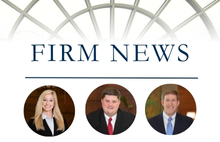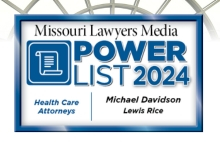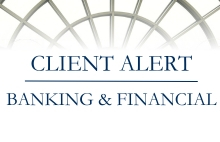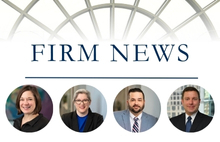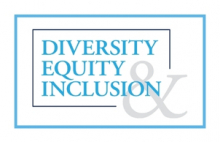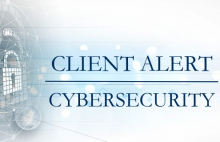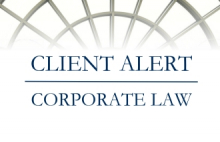Paycheck Protection Program (PPP) Loan Forgiveness Application Issued – How Borrowers Ask for Forgiveness
May 18, 2020On May 15, 2020, the Small Business Administration (SBA) issued the Paycheck Protection Program Loan Forgiveness Application (the “PPP Loan Forgiveness Application”), which includes detailed instructions for the process for applying for forgiveness of a loan made under the Paycheck Protection Program (PPP). This alert describes the components of the PPP Loan Forgiveness Application, walks borrowers and lenders through the key provisions of the application, and provides some additional observations regarding new concepts introduced in the application and potential new issues. SBA has also announced that it “will also soon issue regulations and guidance to further assist borrowers as they complete their applications, and to provide lenders with guidance on their responsibilities.” For our full PPP coverage, click here.
Components of the PPP Loan Forgiveness Application
The PPP Loan Forgiveness Application includes four components, each of which is discussed below in this alert:
- a PPP Loan Forgiveness Calculation Form, which includes identifying information about the borrower, details about the borrower’s PPP loan, a calculation of the forgiveness amount (using data from the PPP Schedule A (see below)), and certifications to be made by the borrower in connection with its application for loan forgiveness;
- a PPP Schedule A, which uses information taken from the PPP Schedule A Worksheet to calculate payroll costs and any required reductions to the forgiveness amount;
- a PPP Schedule A Worksheet, which provides supporting guidance and calculations needed to complete PPP Schedule A; and
- an optional PPP Borrower Demographic Information Form, which collects certain veteran/gender/race/ethnicity data for program reporting purposes only. This information does not impact PPP loan forgiveness.
Concurrently with the issuance of the PPP Loan Forgiveness Application, SBA issued a News Release that identified the following measures included in the PPP Loan Forgiveness Application intended to reduce compliance burdens and simplify the PPP Loan forgiveness process for borrowers:
- options for borrowers to calculate payroll costs using an “alternative payroll covered period” that aligns with borrowers’ regular payroll cycles (see “Borrowers Choose Between the Covered Period or an Alternative Payroll Covered Period”);
- flexibility to include eligible payroll and non-payroll expenses paid or incurred during the eight weeks after receiving their PPP loan (see “Calculating Eligible Costs for Forgiveness”);
- step-by-step instructions on how to perform the calculations required to confirm eligibility for loan forgiveness (see “Calculating Eligible Costs for Forgiveness” and “Determining Required Reductions to the Forgiveness Amount”);
- borrower-friendly implementation of statutory exemptions from loan forgiveness reduction based on rehiring by June 30, 2020 (see “Full-Time Equivalency (FTE) Reduction Calculation”); and
- addition of a new exemption from the loan forgiveness reduction for borrowers who have made good-faith, written offers to rehire workers that were declined (see “Full-Time Equivalency (FTE) Reduction Calculation”).
SBA also announced in its News Release that “SBA will also soon issue regulations and guidance to further assist borrowers as they complete their applications, and to provide lenders with guidance on their responsibilities.” Neither SBA nor the U.S. Department of the Treasury (Treasury) has issued such additional regulations and guidance at the time of this writing.
Borrowers Choose between the Covered Period or an Alternative Payroll Covered Period
The CARES Act provides that the “covered period” in which “costs incurred and payments made” are eligible for forgiveness is the eight-week (56-day) period commencing on the date of origination of the PPP loan (that is, the date on which the lender made the first disbursement of the PPP loan to the borrower). The PPP Loan Forgiveness Application defines such “covered period” referred to in the CARES Act as the “Covered Period,” and it defines the date that a borrower first received PPP loan proceeds from its lender as the “PPP Loan Disbursement Date.”
The PPP Loan Forgiveness Application introduces the Alternative Payroll Covered Period concept, which is not provided for in the CARES Act, the interim final rules or official guidance issued to date. The “Alternative Payroll Covered Period” is the eight-week (56-day) period that begins on the first day of a borrower’s first pay period following its PPP Loan Disbursement Date. The PPP Loan Forgiveness Application provides the following example: “If the Borrower received its PPP loan proceeds on Monday, April 20, and the first day of its first pay period following its PPP loan disbursement is Sunday, April 26, the first day of the Alternative Payroll Covered Period is April 26 and the last day of the Alternative Payroll Covered Period is Saturday, June 20.” Borrowers with a biweekly (or more frequent) payroll schedule may elect the Alternative Payroll Covered Period to make it administratively easier to calculate payroll costs and to maximize their payroll costs eligible for forgiveness.
The Instructions for PPP Schedule A Worksheet states:
Borrowers who elect to use the Alternative Payroll Covered Period must apply the Alternative Payroll Covered Period wherever there is a reference in this application to “the Covered Period or the Alternative Payroll Covered Period.” However, Borrowers must apply the Covered Period (not the Alternative Payroll Covered Period) wherever there is a reference in this application to “the Covered Period” only.
This statement clarifies that borrowers that elect to use the Alternative Payroll Covered Period should use the Alternative Payroll Covered Period only for calculating payroll costs eligible for forgiveness and reductions to the loan forgiveness amount. Borrowers should not use the Alternative Payroll Covered Period for other purposes, such as calculating eligible nonpayroll costs for forgiveness.
Calculating Eligible Costs for Forgiveness
Eligible Payroll Costs
The PPP Loan Forgiveness Application states that borrowers are generally eligible for forgiveness for the payroll costs paid and payroll costs incurred during the eight-week (56-day) Covered Period or, if applicable, the Alternative Payroll Covered Period.
Under Section 1106 of the CARES Act, PPP borrowers are eligible for forgiveness of their PPP loans in an amount equal to the sum of specified “costs incurred and payments made” during the Covered Period. Many wondered what was meant by the phrase “costs incurred and payments made,” raising the following questions (among others):
- Must costs be both incurred and paid? Or is it “costs incurred” and “payments made”?
- In calculating payroll costs, how should a borrower handle payroll costs that relate to work performed outside of the Covered Period, but are paid in whole or in part during the Covered Period? For example, if a fourth payroll date falls outside of the Covered Period, can the borrower accelerate it?
The PPP Loan Forgiveness Application provides the following guidance in this regard:
Payroll costs are considered paid on the day that paychecks are distributed or the Borrower originates an ACH credit transaction. Payroll costs are considered incurred on the day that the employee’s pay is earned. Payroll costs incurred but not paid during the Borrower’s last pay period of the Covered Period (or Alternative Payroll Covered Period) are eligible for forgiveness if paid on or before the next regular payroll date. Otherwise, payroll costs must be paid during the Covered Period (or Alternative Payroll Covered Period).
By permitting payroll costs to be paid after the Covered Period or Alternative Payroll Covered Period on or before the next regular payroll date, SBA has granted borrowers greater flexibility and made it easier for borrowers to maximize their loan forgiveness amount.
The PPP Loan Forgiveness application confirms earlier guidance that the total amount of cash compensation to each employee eligible for forgiveness cannot exceed $15,385, being an annual salary of $100,000 prorated for an eight-week period.
Eligible Nonpayroll Costs
The instructions to the PPP Loan Forgiveness Application define eligible nonpayroll costs eligible for forgiveness as follows:
(a) covered mortgage obligations: payments of interest (not including any prepayment or payment of principal) on any business mortgage obligation on real or personal property incurred before February 15, 2020 (“business mortgage interest payments”);
(b) covered rent obligations: business rent or lease payments pursuant to lease agreements for real or personal property in force before February 15, 2020 (“business rent or lease payments”); and
(c) covered utility payments: business payments for a service for the distribution of electricity, gas, water, transportation, telephone, or internet access for which service began before February 15, 2020 (“business utility payments”).
To qualify for forgiveness, nonpayroll costs must be paid during the Covered Period or incurred during the Covered Period and paid on or before the next regular billing date (even if the billing date is after the Covered Period). A borrower is required to submit evidence of these payments as provided in the instructions. The Alternative Payroll Covered Period is inapplicable to eligible nonpayroll costs.
The PPP Loan Forgiveness Application confirms prior guidance that eligible nonpayroll costs cannot exceed 25% of the total forgiveness amount.
Determining Required Reductions to the Forgiveness Amount
Full-Time Equivalency (FTE) Reduction Calculation
Unless the FTE Reduction Safe Harbor described below applies, a borrower’s loan forgiveness amount will be proportionally reduced by a reduction in the borrower’s total average weekly (not monthly, as provided in the CARES Act) full-time equivalency (FTE) during the Covered Period (or the Alternative Payroll Covered Period) in comparison to the average weekly FTE during the applicable reference period. The applicable reference period is determined by the borrower, which must select one of the following reference periods:
- February 15, 2019 to June 30, 2019;
- January 1, 2020 to February 29, 2020; or
- in the case of a borrower that is a seasonal employer, either of the of the preceding periods or a consecutive 12-week period between May 1, 2019 and September 15, 2019.
To calculate average FTE during the Covered Period, the Alternative Payroll Covered Period, or the selected reference period, a borrower must, for each employee: (1) determine the average number of hours paid per week; (2) divide by 40; and (3) round the total to the nearest tenth (capped at 1.0). Alternatively, a borrower may use a simplified method that assigns a 1.0 FTE for employees who work 40 hours or more per week and 0.5 FTE for employees who work fewer hours. Depending on the number of employees a borrower may have, it may need to add additional sheets to the PPP Schedule A Worksheet to list each employee.
The Instructions for PPP Schedule A Worksheet states that the following FTE reductions do not reduce the borrower’s loan forgiveness:
- any positions for which the borrower made a good-faith, written offer to rehire an employee during the Covered Period or the Alternative Payroll Covered Period which was rejected by the employee; and
- any employees who during the Covered Period or the Alternative Payroll Covered Period:
- were fired for cause
- voluntarily resigned, or
- voluntarily requested and received a reduction of their hours.
Although SBA previously announced the exclusion of employees who reject an offer to rehire in official guidance, the other exemptions are new. SBA or Treasury will presumably implement each of the exemptions described above through interim final rules or regulations.
The CARES Act, the interim final rules, and official guidance issued to date provides for a safe harbor, referred to in the PPP Loan Forgiveness Application as the “FTE Reduction Safe Harbor,” which exempts borrowers from the loan forgiveness reduction based on FTE employee levels if:
- the borrower reduced its FTE employee levels in the period beginning February 15, 2020 and ending April 26, 2020; and
- the borrower then restored its FTE employee levels by not later than June 30, 2020 to its FTE employee levels in the borrower’s pay period that included February 15, 2020.
Salary/Hourly Wage Reduction
Unless the Salary/Hourly Wage Reduction Safe Harbor described below applies, a borrower’s loan forgiveness amount will be reduced if the employer reduced the salary or hourly wages of any employee by more than 25% during the Covered Period or the Alternative Payroll Covered Period as compared to the period from January 1, 2020 to March 31, 2020. This reduction is referred to in the PPP Loan Forgiveness Application as the “Salary/Hourly Wage Reduction.” The Instructions for PPP Schedule A Worksheet confirms that the Salary/Hourly Wage Reduction is calculated on a per-employee basis using salary for salaried employees and hourly wage for hourly employees (rather than aggregate amounts of salaries or wages paid during the relevant periods).
For purposes of calculating the Salary/Hourly Wage Reduction, borrowers should exclude any employee that received compensation from the borrower at an annualized rate of greater than or equal to $100,000 for any pay period in 2019.
A borrower must use the following steps to calculate the Salary/Hourly Wage Reduction (references to the Steps set forth in the Instructions for PPP Schedule A Worksheet are included below):
1. Determine the average annual salary or hourly wage for the employee during the Covered Period or the Alternative Payroll Covered Period (Step 1(a)). Based on the instructions for the Salary/Hourly Wage Reduction, it appears that references to “average annual salary or hourly wage” are intended to refer to weekly averages.
2. Determine the average annual salary or hourly wage for the employee between January 1, 2020 and March 31, 2020 (Step 1(b)).
3. Calculate the reduction in average annual salary or hourly wage for the employee (Step 1(c)) by:
a. Dividing the average annual salary or hourly wage for the employee between January 1, 2020 and March 31, 2020 by the average annual salary or hourly wage for the employee during the Covered Period or the Alternative Payroll Covered Period.
b. If the reduction in average annual salary or hourly wage for the employee is less than or equal to 0.75 (or 75%), then there is no Salary/Hourly Wage Reduction attributable to the employee.
c. If the reduction in average annual salary or hourly wage for the employee is greater than 0.75 (or 75%), then the borrower must continue the analysis for the employee as described below.
4. Determine if the Salary/Hourly Wage Reduction Safe Harbor is met (Step 2).
a. Determine the annual salary or hourly wage for the employee as of February 15, 2020 (Step 2(a)).
b. Determine the average annual salary or hourly wage for the employee between February 15, 2020 and April 26, 2020 (Step 2(b)).
c. Determine the average annual salary or hourly wage for the employee as of June 30, 2020 (Step 2(c)). Note that it appears the borrower must compare actual annual salaries or hourly wages as of February 15, 2020 to average annual salary or average hourly wages as of June 30, 2020, but the instructions do not specify for what period these averages should be determined. It is not clear whether the use of “average” in “average annual salary or hourly wage as of June 30, 2020” in Step 2(c) is intentional, particularly considering the omission of “average” in Step 2(a). It appears that borrowers could potentially restore salaries and wages before June 30, 2020, but still not qualify for the Salary/Hourly Wage Reduction Safe Harbor due to averaging.
d. If the average annual salary or hourly wage for the employee as of June 30, 2020 is equal to or greater than the annual salary or hourly wage for the employee as of February 15, 2020, then the Salary/Hourly Wage Reduction Safe Harbor has been met. If the Salary/Hourly Wage Reduction Safe Harbor is met, there would be no Salary/Hourly Wage Reduction attributable to the employee. If, however, the Salary/Hourly Wage Reduction Safe Harbor does not apply, then there would be a Salary/Hourly Wage Reduction attributable to the employee, calculated as described below.
5. If the Salary/Hourly Wage Reduction Safe Harbor has not been met for the employee, the borrower must determine the Salary/Hourly Wage Reduction for the employee (Step 3) by:
a. multiplying the average annual salary or hourly wage for the employee between January 1, 2020 and March 31, 2020 by 0.75 (Step 3(a));
b. subtracting from the product obtained above by the average annual salary or hourly wage for the employee during the Covered Period or the Alternative Payroll Covered Period (Step 3(b)); and
c. calculating the total dollar amount of the reduction that exceeds 25% by:
i. if the employee is an hourly worker:
1. determining the average number of hours worked per week by the employee between January 1, 2020 and March 31, 2020 (Step 3(c)); then
2. multiplying the amount determined under Step 3(b) by the average number of hours worked per week by the employee between January 1, 2020 and March 31, 2020 (Step 3(d)); or
ii. if the employee is a salaried worker, multiplying the amount determined under Step 3(b) by 8/52 (Step 3(e)).
The borrower’s loan forgiveness amount will be reduced by the aggregate amount of Salary/Hourly Wage Reductions for all employees.
Required Certifications
Borrowers are required to make the following certifications in the PPP Loan Forgiveness Application:
- The dollar amount for which forgiveness is requested:
- was used to pay costs that are eligible for forgiveness (payroll costs to retain employees; business mortgage interest payments; business rent or lease payments; or business utility payments);
- includes all applicable reductions due to decreases in the number of full-time equivalent employees and salary/hourly wage reductions;
- does not include nonpayroll costs in excess of 25% of the amount requested; and
- does not exceed eight weeks’ worth of 2019 compensation for any owner-employee or self-employed individual/general partner, capped at $15,385 per individual.
- I understand that if the funds were knowingly used for unauthorized purposes, the federal government may pursue recovery of loan amounts and/or civil or criminal fraud charges.
- The Borrower has accurately verified the payments for the eligible payroll and nonpayroll costs for which the Borrower is requesting forgiveness.
- I have submitted to the Lender the required documentation verifying payroll costs, the existence of obligations and service (as applicable) prior to February 15, 2020, and eligible business mortgage interest payments, business rent or lease payments, and business utility payments.
- The information provided in this application and the information provided in all supporting documents and forms is true and correct in all material respects. I understand that knowingly making a false statement to obtain forgiveness of an SBA-guaranteed loan is punishable under the law, including 18 USC 1001 and 3571 by imprisonment of not more than five years and/or a fine of up to $250,000; under 15 USC 645 by imprisonment of not more than two years and/or a fine of not more than $5,000; and, if submitted to a Federally insured institution, under 18 USC 1014 by imprisonment of not more than thirty years and/or a fine of not more than $1,000,000.
- The tax documents I have submitted to the Lender are consistent with those the Borrower has submitted/will submit to the IRS and/or state tax or workforce agency. I also understand, acknowledge, and agree that the Lender can share the tax information with SBA’s authorized representatives, including authorized representatives of the SBA Office of Inspector General, for the purpose of ensuring compliance with PPP requirements and all SBA reviews.
- I understand, acknowledge, and agree that SBA may request additional information for the purposes of evaluating the Borrower’s eligibility for the PPP loan and for loan forgiveness, and that the Borrower’s failure to provide information requested by SBA may result in a determination that the Borrower was ineligible for the PPP loan or a denial of the Borrower’s loan forgiveness application.
As noted above, the borrower is required to certify that “[t]he dollar amount for which forgiveness is requested … does not exceed eight weeks’ worth of 2019 compensation for any owner-employee or self-employed individual/general partner, capped at $15,385 per individual.” It is not clear how “eight weeks’ worth of 2019 compensation” should be calculated, including whether the borrower should include bonuses in such calculation.
Forgiveness Process
Documentation, Generally
Each borrower must submit the following documents to its lender to apply for forgiveness:
- PPP Loan Forgiveness Calculation Form;
- PPP Schedule A;
- Payroll documentation, as described below;
- FTE documentation, as described below; and
- Nonpayroll documentation, as described below.
The documentation may be submitted in paper format or, if permitted by the lender, electronically through a portal or other means of electronic delivery.
Payroll Documentation
Borrowers must submit documentation verifying the eligible cash compensation and non-cash benefit payments from the Covered Period or the Alternative Payroll Covered Period, consisting of each of the following:
- Bank account statements or third-party payroll service provider reports documenting the amount of cash compensation paid to employees.
- Tax forms (or equivalent third-party payroll service provider reports) for the periods that overlap with the Covered Period or the Alternative Payroll Covered Period:
- payroll tax filings reported, or that will be reported, to the IRS (typically, Form 941); and
- state quarterly business and individual employee wage reporting and unemployment insurance tax filings reported, or that will be reported, to the relevant state.
- Payment receipts, cancelled checks, or account statements documenting the amount of any employer contributions to employee health insurance and retirement plans that the borrower included in the forgiveness amount (PPP Schedule A, lines (6) and (7)).
FTE Documentation
Borrowers must submit documentation showing (at the election of the borrower):
- the average number of FTE employees on payroll per month employed by the borrower between February 15, 2019 and June 30, 2019;
- the average number of FTE employees on payroll per month employed by the borrower between January 1, 2020 and February 29, 2020; or
- in the case of a seasonal employer, the average number of FTE employees on payroll per month employed by the borrower:
- between February 15, 2019 and June 30, 2019;
- between January 1, 2020 and February 29, 2020; or
- during any consecutive twelve-week period between May 1, 2019 and September 15, 2019.
The selected time period must be the same time period selected by the borrower for purposes of completing PPP Schedule A, line 11 (Average FTE during the borrower’s chosen reference period).
Such documentation may include:
- payroll tax filings reported, or that will be reported, to the IRS (typically, Form 941); and
- state quarterly business and individual employee wage reporting and unemployment insurance tax filings reported, or that will be reported, to the relevant state.
Nonpayroll Documentation
Borrowers must submit documentation verifying existence prior to February 15, 2020 of the obligations/services underlying the eligible nonpayroll costs for which forgiveness is sought and payments thereof from the Covered Period.
The following documentation is specifically required to the extent there are eligible nonpayroll costs arising therefrom for which the borrower seeks forgiveness:
- Business mortgage interest payments: copies of lender amortization schedule(s) and receipts or cancelled checks verifying eligible payments from the Covered Period; or lender account statements from February 2020 and the months of the Covered Period through one month after the end of the Covered Period verifying interest amounts and eligible payments;
- Business rent or lease payments: copies of current lease agreement and receipts or cancelled checks verifying eligible payments from the Covered Period; or lessor account statements from February 2020 and from the Covered Period through one month after the end of the Covered Period verifying eligible payments; and
- Business utility payments: copies of invoices from February 2020 and those paid during the Covered Period and receipts, cancelled checks, or account statements verifying those eligible payments.
Other Documentation; Mandatory Record Retention
Borrowers are required to maintain, but not submit, the following documentation:
- PPP Schedule A Worksheet or its equivalent;
- Documentation supporting the listing of each individual employee in PPP Schedule A Worksheet Table 1, including the “Salary/Hourly Wage Reduction” calculation, if necessary;
- Documentation supporting the listing of each individual employee in PPP Schedule A Worksheet Table 2; specifically, that each listed employee received during any single pay period in 2019 compensation at an annualized rate of more than $100,000;
- Documentation regarding any employee job offers and refusals, firings for cause, voluntary resignations, and written requests by any employee for reductions in work schedule; and
- Documentation supporting the PPP Schedule A Worksheet “FTE Reduction Safe Harbor.”
The PPP Loan Forgiveness Application imposes the following requirements with respect to record keeping, records retention, and inspection rights:
[All Borrowers must maintain (but are not required to submit) all] records relating to the Borrower’s PPP loan, including documentation submitted with its PPP loan application, documentation supporting the Borrower’s certifications as to the necessity of the loan request and its eligibility for a PPP loan, documentation necessary to support the Borrower’s loan forgiveness application, and documentation demonstrating the Borrower’s material compliance with PPP requirements. The Borrower must retain all such documentation in its files for six years after the date the loan is forgiven or repaid in full, and permit authorized representatives of SBA, including representatives of its Office of Inspector General, to access such files upon request.
Other Observations
Ambiguity on Total Number of Employees
The instructions direct the borrower to enter both “the total number of employees at the time of the Borrower’s PPP Loan Application” and “the total number of employees at the time the Borrower is applying for loan forgiveness.” It is unclear whether “total number of employees” refers to the total number of employees of the borrower or the total number of employees of the borrower and its affiliates.
PPP Loans of $2 Million or More
Borrowers are required to indicate whether the borrower, together with its affiliates (to the extent required under SBA’s interim final rule on affiliates (85 FR 20817 (April 15, 2020)) and not waived under 15 U.S.C. 636(a)(36)(D)(iv)), received PPP loans with an original principal amount above $2 million. SBA will presumably use this information to flag PPP loans for the “full reviews” previously announced by Treasury.
Denial of Forgiveness based on PPP Loan Ineligibility
The PPP Loan Forgiveness Application includes the following statement: “The Borrower’s eligibility for loan forgiveness will be evaluated in accordance with the PPP regulations and guidance issued by SBA through the date of this application. SBA may direct a lender to disapprove the Borrower’s loan forgiveness application if SBA determines that the Borrower was ineligible for the PPP loan.”
Amounts Paid to Owners and Self-Employed Individuals
PPP Schedule A requires borrowers to separately identify the total amount paid to owner-employees/self-employed individuals/general partners. The purpose of requesting this information is not explicitly stated. Although the purpose is not explicitly stated, such request for information may relate to the process by which SBA intends to select PPP Loan Forgiveness Applications and the PPP loans to which they relate for review.
Forthcoming Guidance and Regulations
As noted in SBA’s News Release, additional regulations and official guidance relating to forgiveness are forthcoming. Hopefully, such forthcoming regulations and official guidance are consistent with the PPP Loan Forgiveness Application and the instructions therein and provide additional guidance, answers to questions (including with respect to the ambiguities noted in this alert), and clarifications on issues of concern to PPP borrowers and lenders.
Conclusion
The PPP Loan Forgiveness Application provides needed guidance to borrowers preparing to request forgiveness for their PPP loans, and to lenders that will need to receive and review those requests. The forthcoming interim final rules and official guidance should assist borrowers and lenders in the PPP loan forgiveness process. Lewis Rice will continue to monitor these developments and provide updates as needed.
Our attorneys are closely monitoring these developments as they occur and will make regular updates to our COVID-19 Resource Center. If you have any questions about the implications and disruptions of COVID-19 on your business, please reach out to one of the authors above or another member of the Task Force.
